Let’s Explore The Fight or Flight Response in PTSD and CPTSD
When you are overwhelmed by emotion, you react. That reaction helps you to survive, but at the same time, creates persistent patterns that reenact themselves over time.
Those patterns of reenactment often have the same emotional content in them as the ones you had when you were young; what has changed are the circumstances and the people around you.
The Initial Fight or Flight Response, and The Please-Appease Responses
Most of these persistent reenactment patterns are formed in relation to your parents and/or siblings, as you spend most of your time with them when you are growing up and when your character is forming.
When you are overwhelmed by emotion, you react. That reaction helps you to survive, but at the same time, creates persistent patterns that reenact themselves over time.
Those patterns of reenactment are fired up by your initial reactions of fight, flight, or please-appease that you adopted when young, when you felt overwhelmed, and in situations where you needed to protect yourself in order to survive.
Depending on the character structure of your parent(s), sibling(s) or other abuser(s) who had a traumatic impact on you, you will adopt a fight or flight response, or please-appease reactive pattern.
Moreover, you will likely have a combination of the fight, flight, and please-appease response and of these—in the case of complex trauma—you will likely have a variety of them.
The Fight or Flight Response Outlined
For example, whenever you felt threatened or your needs weren’t met by your mother, you might have reacted through aggression or tantrums, which are part of a fight response. If that response didn’t hold up, you might have diverted your energy into isolating yourself from her, which is a flight response.
In this case, you would thus have a combination of fight-flight, and if the pressure continued, you would eventually go into a shutdown or freeze response.
If your father was more directly aggressive, you would have avoided any contact if you sensed something was off, which is part of a flight response. When confrontation was inevitable, eventually you would have used a please-appease to mitigate any further form of abuse.
If others repeatedly invaded your integrity when you were young, these fight-flight-please combination patterns became more hardwired in your nervous system. Later in life, you will react to people and situations with those same fight-flight-please patterns when they reflect your early life circumstances or the character of your mom, dad, sibling, or abuser.
The Anger-Fight Response and The Pleasing Response
These reactions are your traumatic residue. They are the patterns that attract you—through your reaction to them—to certain circumstances and people, often creating more confusion, more rigidity of your patterns, and furthering internal and external conflict.
Let me offer two examples to make these patterns more clear to you:
Joanna’s father separates from her mother when Joanna is only two years old, and she has no further contact with him thereafter. The sudden absence leaves her with feelings of abandonment that she carries with her into adulthood.
Are You Ready To Heal From Narcissistic Abuse?
When she gets together with a partner, she tends to give too much of herself out her desire to be loved, which is fueled by her pain of abandonment. When her attachment gets to be too much for her partner(s), and there is the threat of separation, she becomes overly aggressive and pushes her partner away before she can be rejected or abandoned.
The Pleasing Response and Fear of Abandonment
Joanna acts out of pleasing as her initial response to wanting closeness; this is a result of the pain of her abandonment, and out of fear that her core pain will be repeated. Through her overcompensation she recreates what she tries to avoid, and thereby reenacts her past. When those wheels are set in motion, she tries to further protect herself by acting out and rejecting first, through a fight response.
The anger that she acts out in her adult life is both the unprocessed anger she could not own as a child for being abandoned by her dad, and a protection from feeling further rejected/abandoned. Her hardwired pleasing response is to be liked, loved, and to feel adequate and accepted, all of which she has put in place to compensate for her core pain of being abandoned.
The patterns that she reenacts in the here-now—based on her past history—is please-fight.
Dependency and Fight or Flight Example
Anton grows up with a mom who depends on him to meet her own emotional needs. As a child, Anton deals with her by trying minimize contact as much as possible—by acting out a flight response—and whenever his mom starts to take up too much space, he lashes out through a fight response.
Into adulthood, Anton attempts to be as independent as possible to avoid becoming dependent or having someone be dependent on him. He thereby reenacts the initial flight-survival response he created to deal with his mom.
The difficulties that that response brings with it are that he is seen as distant, arrogant, overly independent and standoffish.
Are You Ready To Heal From Narcissistic Abuse?
Furthermore, romantically, he feels himself more attracted to outgoing and independent people who are the opposite of his mother, and he needs considerable time let people in and open up.
Whenever he does let a partner get closer, he often withdraws emotionally or gets into fights as he fears too much attachment and a repeat of what he experienced in his childhood. Over time, Anton has more trouble engaging with people and relationships.
Anton survival response is a flight or fight response combination.
How We Attract Future Partners
In these examples, you can observe the reenactment patterns of flight or fight response, please-appease response and the long-term ramifications they bring with them.
Through reaction, projection and reenactment, Anton and Joanna recreate situations that, emotionally, trigger them and remind them of their past.
I would even go as far as to say that you attract your future partners based on how you reacted to your parents. For men, that is often how you reacted towards your mom, and for women how you related to your dad.
That initial reaction creates a reenactment where your future partner, emotionally, is similar to your mom or dad or the exact opposite. Both scenarios will recreate conflict, as they are based on unprocessed emotional residue that is acted out in the here-now.
Reenactment, Projection, and The Fight or Flight Example
When you remain unaware of these patterns of reaction, projection, and reenactment, they can make you more rigid and cause more conflict.
That said, those periods of crisis that come up through relating also are an opportunity to bring more awareness to those pains that haven’t been fully resolved. Through holding space, open communication, honesty, and containment, these hardwired patterns can lessen their grip and work for you rather than against you.
The New Course ‘Healing from Narcissistic Abuse‘ is now available.
This course gives you the know how and tools to work towards more independence, away from the codependency attachment to a narcissist. As a byproduct of the above, you will, in time, be able to be more financially and emotionally independent.This course will help you give you the insights of why you please-appease, how that ties in with the need for belonging and how that creates symptoms of attachment, anxiety, and depression. Furthermore, you will be guided through the somatic meditations and techniques to rewire those survival responses and bring them to more healthy balanced-out levels.This course will go into how to gradually set boundaries, through accessing anger constructively, and how that will help you to reduce anxiety and dependence and how thereby you will give more validation to yourself.
Are You Ready To Heal From Narcissistic Abuse?



